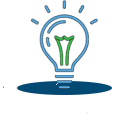Cylinder Types
- Evident weight reduction (from 50% to 75%) in adopting Type 3 and Type 4 cylinders
- ONE TIME INVESTMENT
- Lifelong savings of up to 4% in fuel costs translating into $M for fleet owners.
- Low cylinder weight
- lowers fuel consumption
- allows increased payload
Type 1
Chromoly (Chromium Molybdenum: CrMo) steel
Market Share 93%
These are the most common in market.
They are relatively cheap, yet very heavy. A full Type 1 cylinder could easily weigh over 350 pounds. A 10 gge Type 1 cylinder could cost around $1,000.
A bonus about steel cylinders is that they can pass inspections easier.
They are allowed to show a little bit of wear, dings, and scratches, etc. The other 3 types are held to a higher standard of visual damage.
Indicative Cost $3 – $5 / Liter
Indicative Weight 0.9 ~ 1.3 Kgs/ Liter
Minimum Burst Ratio – 2.25
Minimum Stress Ratio – N/A
Metal : Composite = 100 : 0
Type 2
Chromoly (Chromium Molybdenum: CrMo) steel wrapped with Glass Fiber
Market Share 4%
Type 2 cylinders have a metal liner and a composite “wrap” or reinforcement along the straight sides.
The metal liner is designed to withstand the high-pressure all by itself, but the wrap provides additional support and safety.
These two components are a compromise between the heavy Type 1 and much lighter Types 3 and 4.
Indicative Cost $5 – $7 / Liter
Indicative Weight 0.8 ~ 1.0 Kgs/ Liter
Minimum Burst Ratio
Glass – 2.5
Carbon – 2.35
Minimum Stress Ratio
Glass – 2.75
Carbon – 2.3
Metal : Composite = 55 : 45
Type 3
Aluminium Alloy with HP Glass and / or Carbon Fiber
Market Share <2%
Aluminum Liner reinforced with resin impregnated continuous filament (fully wrapped)
Type 3 has a seamless metal liner that is completely wrapped on all surfaces by a composite reinforcement.
The full wrap provides almost all of the strength of the CNG cylinder.
You have probably seen Type 3 cylinders without knowing it as they are common in industrial, SCUBA and medical oxygen storage.
These cylinders require very little maintenance or periodic sandblasting/ painting.
They are much lighter weight than Type 1.
Composites carry about a premium over steel cylinders, however, this price differential can easily be made up for within the first year based on the savings in operating costs.
Indicative Cost $14 – $18 / Liter (With cylinder sizes 300 liters and above. Smaller sizes are more expensive)
Indicative Weight 0.4 ~ 0.5 Kgs/ Liter
Minimum Burst Ratio
Glass – 3.5
Carbon – 2.35
Minimum Stress Ratio
Glass – 3.65
Carbon – 2.35
Metal : Composite = 20 : 80
Type 4
Fully Wrapped Non-Metallic Liner
Market Share <2%
HDPE liner with Carbon
Resin impregnated continuous filament with a non-metallic liner.
Very expensive compared to Type 1.
$3,000-$5,000 for the cylinder alone. These have a plastic liner and a full wrapping of carbon fiber or mixed fiber. The liners are a permeation barrier only.
Large 15-20gge tanks of Type 4 only weigh about 100 pounds when empty.
The strength is in the carbon fiber wrapping. These cylinders are actually not gas tight, but they leak so slowly that nobody worries about permeation.
Type 4 is fitted with impact protection on the domes for more strength. These are most common on small engine cars like a Civic or like a bus where weight is more important.
Indicative Cost $17 – $20 / Liter
Indicative Weight 0.3 ~ 0.4 Kgs/ Liter
Minimum Burst Ratio
Glass – 3.65
Carbon – 2.35
Minimum Stress Ratio
Glass – 3.65
Carbon – 2.35
Metal : Composite = 0 : 100


